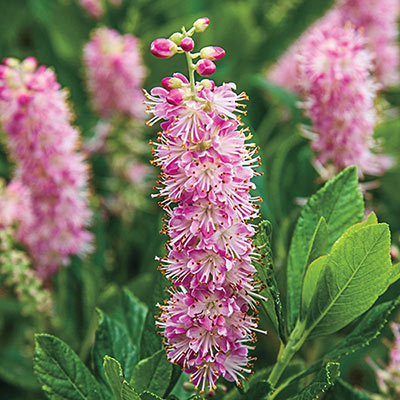They called it a tornadic supercell or two. The big cell headed toward Springdale in the oddest way. Tornado warnings blasted from the TV, but there was almost no rain or wind. The dark clouds set off the solar lights in the yard.
I thought everything had calmed down, so I took Sassy out for her afternoon walk. Although no rain was falling, no wind blowing, she refused to move from her spot on the driveway. Mrs. Ichabod said, "She is smarter than you." We came in to hear another tornado warning on the TV, and it is headed our way. I knew I would hear this from my wife - "Sassy knew." That cell was actually on our main street, Elm Springs, but moved on.
Doubtless animals know far in advance. The birds had a chance to feed but did not. The squirrels came out to feast on some extra food and peanuts.
The rose garden is deep green from these episodes of rain and sun. I enjoy seeing the Joe Pye from last year coming up, not to mention the very healthy Hosta. One gardening friend said, "I love Hosta, but the rabbits ate mine." I thought that could easily happen to me. Wild rabbits casually walk by while I am gardening, but the Hosta is growing strong.
Last year I decided not to divide mature Hosta plants that I was getting from the backyard and Mrs. Gardener. I am glad, because this year they are much stronger and will divide that much better.
The long-term plan is to fill the grassy spaces between roses with various kinds of beneficial groundcover, such as Joe Pye, Daisies, and Hosta. At this point I can spend nothing but labor in multiplying many plants, including Cat Mint, and making it a paradise for butterflies, bees, beneficial insects, and hummingbirds.
The Bee Balm I planted last fall (with some dread) came up looking like mature plants, ready to bloom. They are a type of mint loved by bees and hummingbirds. I have never seen so many strong, healthy Bee Balms.
As readers know, yawning, I am fond of mints because they bloom profusely and attract the pollinators all summer. Tiny insects are often the best, and they like tiny flowers. In general, the adults like those for pollen and nectar but they lay their eggs on or near pests like aphids.
Daisies are a wonder-flower this way. Plant one bunch and the tachinid fly - that decimates aphids - will appear. Daisies grow easily and are divided easily for more flowers.
Plants are definitely examples of "build it and they will come." That is why so many yards are boring, with a few evergreen bushes and lots of grass. That is why I go through Jessica Walliser's book to see which plants I need for the most beneficial bugs. Some of the best are:
Sunflowers - an aircraft carrier for beneficial insects;
Fever Few - seeds itself with abandon and always hosts beneficial insects;
Borage - also called Bee Bread - a delight for bumble bees and seeds itself - flowers are edibled;
Hosta - attractive and multi-colored leaves, flowers for hummingbirds late in summer;
Joe Pye - very hardy, scented, wildly attractive to butterflies and all beneficials;
Clethra - the Cinnabon tree - scented and especially attractive to butterflies; I moved it to the rose garden to enjoy the aroma of cinnamon rolls, whether blooming or not.
 |
| This Clethra or Summersweet has a wonderful aroma. |

